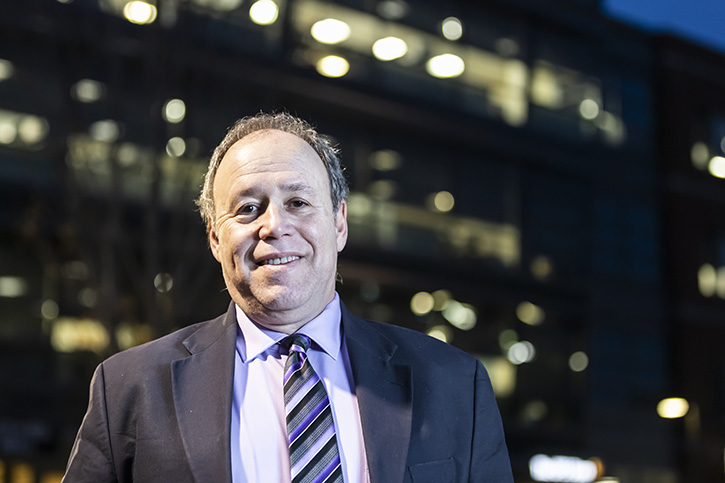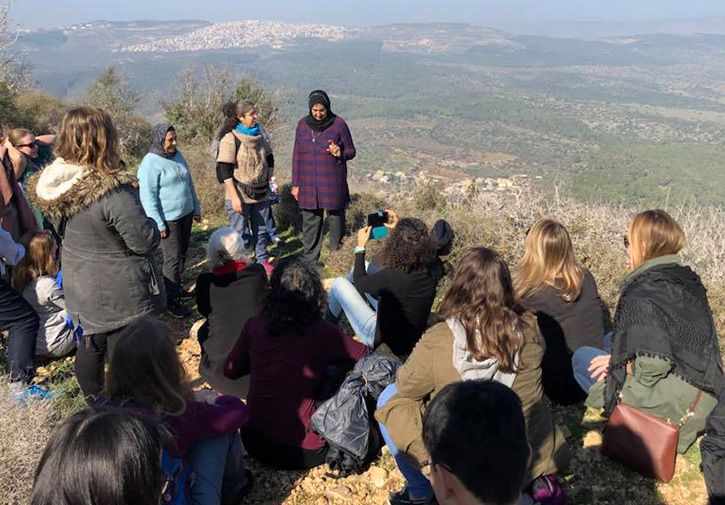Professor Marc Gopin's students engage in peacebuilding and analysis on both sides of seemingly intractable conflicts.

The Holocaust had ended by the time George Mason University professor Marc Gopin was a child, but the suffering it caused his family, neighbors and teachers had not.
Because he knew people who had fled for their lives, were tortured, hid for safety, lost loved ones or were living with post-traumatic stress disorder and the emotional weight of their experiences, Gopin was sensitive to the suffering he felt around him. He was also perplexed by why some enlightened societies in history could become destructive and revert back again.
“I was trying to think about that from the time I was little,” he said.
It’s clear Gopin’s done more than think about issues of war and peace since then. The founder and director of Mason’s Center for World Religions, Diplomacy and Conflict Resolution (CRDC) has pioneered projects in Bosnia, Northern Ireland, Afghanistan, Palestine, Israel, Turkey, Jordan and Syria, and has trained thousands of people worldwide in peacebuilding strategies through CRDC for more than 15 years.
“I started becoming passionate about [being] antiwar in the early ’80s,” Gopin said. “It was the time of danger of nuclear escalation, and I had always been particularly wounded by World War II.” Though he cherished Israel as a haven for Jews, he said he “started to disagree strongly with Israel’s use of force in Lebanon and of the treatment of Palestinians.”
On his own, Gopin sought out Palestinians in Israel to talk about peacebuilding and forgiveness. At the time, crossing enemy lines was both unheard of and dangerous, as Jews were hated in many parts of the Middle East due to the Arab-Israeli wars.
“I became stubborn and determined to make peace in the Middle East, and I developed an expertise in conflict resolution, particularly in Arab and Jewish cultures,” he said.
As Gopin combined conflict resolution with his previous studies of religion, philosophy and ethics, he became familiar with Mason’s School for Conflict Analysis and Resolution, where he now teaches and continues his peacebuilding efforts.
At Mason, students get to be a part of the work that includes engaging with families affected by wars, listening and being compassionate to people from diverse backgrounds and engaging in peacebuilding operations and analysis on both sides of seemingly intractable conflicts.
Sarah Sadowski, MS Conflict Analysis and Resolution ’16, has gone on three trips with the center.
“I kept going back for more experiences because [CRDC does] an excellent job of showing all sides of the conflict,” said Sadowski, who worked with people who experienced the Northern Ireland conflict, and with Israelis and Palestinians overseas. “These experiences helped me find compassion for both sides of a conflict instead of victimizing or blaming.”
According to Gopin, that compassion is a foundation of peacebuilding that comes about when the contact with others is deep. And the effects are noticeable.
For example, when hospitals in Syria were being bombed, his group was able to support people who were working to outsmart the destruction. They were also able to gather people from various backgrounds to help with local councils formed at the time.
No matter the country, the school’s peacebuilding methodologies have led to a coalition of people who put aside differences to work together.
“It becomes a chain of support, which is a new and novel way of empowerment,” Gopin said.
The center’s most recent project is focused on empowering Syrian women in political roles. Because men are the main combatants in war, women are in a potentially powerful position to be the binders of society, Gopin said.
“That’s why they need political empowerment. They need education and they need a voice. Our programs are giving them exactly that.”
The experiences are transformative for students, too.
“Many people report to us that their lives have changed completely because they’ve never been on that side of the war before; they’ve never been able to see the receiving end of conflict,” Gopin said. “My aspiration is for my students to become those ambassadors for a constraint of war as far as possible, and for the rational focus on real recovery.”
And the impact of the program could extend even further.
“CRDC gives you that real-world experience that people in this field need to truly understand the work and to be effective,” said Sadowski. “The experience you have teaches you more than you may ever come to realize.”

